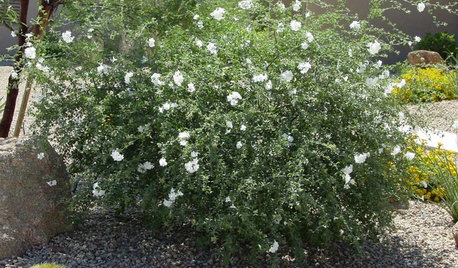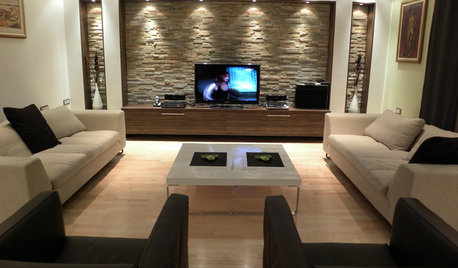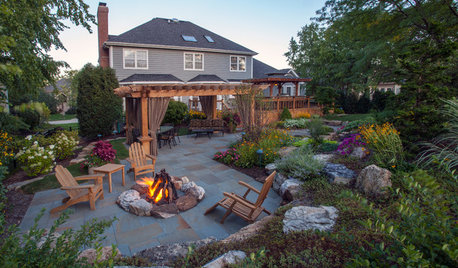PeeGee and Extreme Heat?
backyardener
14 years ago
Related Stories

GREEN BUILDINGInsulation Basics: Designing for Temperature Extremes in Any Season
Stay comfy during unpredictable weather — and prevent unexpected bills — by efficiently insulating and shading your home
Full Story
TASTEMAKERS3 Extreme Chair Makeovers — Plus DIY Reupholstering Tips
Spoiled seats and forlorn frames get kicked to the curb by a Philadelphia reupholstery whiz with a flair for salvaging and artistic designs
Full Story
GARDENING GUIDESGreat Design Plant: Little-Leaf Cordia Handles Desert Extremes
Its delicate white flowers are rare in hot and dry sites, but Cordia parvifolia offers more than mere beauty
Full Story
GARDENING GUIDES10 Cold- and Heat-Tolerant Perennials and Shrubs for the Arid West
These flowering native plants shrug off the cold of winter and heat of summer while adding beauty to the drought-tolerant landscape
Full Story
MORE ROOMSBeat the Heat: Escape to the Basement
When It's Too Hot or Rainy, Bring the Party Downstairs
Full Story
FLOORSWhat to Ask When Considering Heated Floors
These questions can help you decide if radiant floor heating is right for you — and what your options are
Full Story
FLOORSFloors Warm Up to Radiant Heat
Toasty toes and money saved are just two benefits of radiant heat under your concrete, wood or tile floors
Full Story
BATHROOM DESIGNWarm Up Your Bathroom With Heated Floors
If your bathroom floor is leaving you cold, try warming up to an electric heating system
Full Story
GREEN BUILDINGInsulation Basics: Heat, R-Value and the Building Envelope
Learn how heat moves through a home and the materials that can stop it, to make sure your insulation is as effective as you think
Full Story
GARDENING AND LANDSCAPING3 Ways to Bring the Heat to Outdoor Living Spaces
Here’s what to know about surviving winter’s bite with an outdoor fireplace, fire pit or heat lamp
Full StoryMore Discussions







jean001
gardengal48 (PNW Z8/9)
Related Professionals
Camas Landscape Architects & Landscape Designers · Foothill Ranch Landscape Architects & Landscape Designers · Quincy Landscape Architects & Landscape Designers · Buford Landscape Contractors · Byram Landscape Contractors · Florham Park Landscape Contractors · Fort Atkinson Landscape Contractors · Hoffman Estates Landscape Contractors · Lewisville Landscape Contractors · Snoqualmie Landscape Contractors · West Palm Beach Landscape Contractors · Selma Landscape Contractors · Cedar Park Siding & Exteriors · Bethany Siding & Exteriors · Springfield Siding & ExteriorsbackyardenerOriginal Author
luis_pr
gardengal48 (PNW Z8/9)
backyardenerOriginal Author
ginkgonut